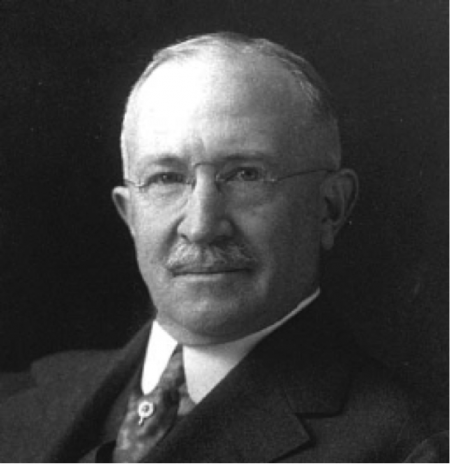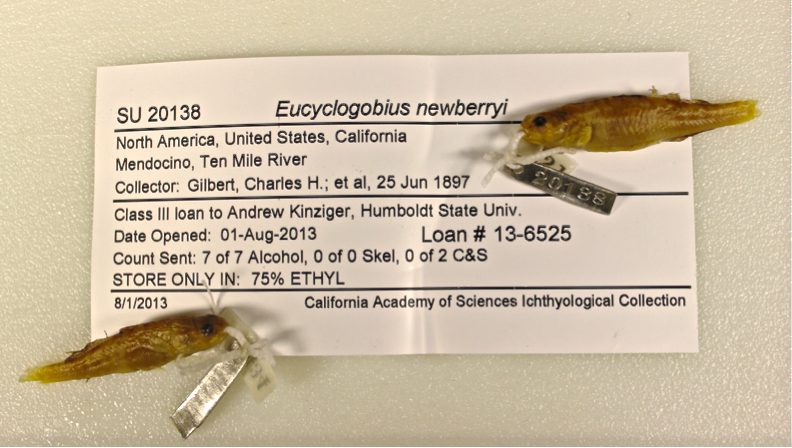Monday October 28, 2013
Historical scientific collections of fish and other animals provide an ecological snapshot in time that can prove useful to contemporary researchers in a variety of ways. Perhaps most importantly, individual specimens upon which species descriptions are based are archived in such collections for future reference, and can be accessed to verify species designations as new knowledge and methods become available. Further, preserved fish containing preserved stomach contents can provide insight into their diets; their otoliths, or ear bones, offer historic age and growth information; and their tissues can reveal the past genetic makeup of populations long replaced by subsequent generations.
 Among the most prominent fish collectors was Charles H. Gilbert, mentored in his younger years by famed ichthyologist David Starr Jordan. As a founding faculty member of Stanford University and the chairman of its Zoology department, Gilbert contributed to the description of more than 600 species of fish in the late 19th and early 20th century, and, more recently, inspired the creation of the Gilbert Ichthyological Society. His sampling legacy is now deposited in various scientific fish collections, where – pending approval by the collection manager – specimens can be obtained for scientific study.
Among the most prominent fish collectors was Charles H. Gilbert, mentored in his younger years by famed ichthyologist David Starr Jordan. As a founding faculty member of Stanford University and the chairman of its Zoology department, Gilbert contributed to the description of more than 600 species of fish in the late 19th and early 20th century, and, more recently, inspired the creation of the Gilbert Ichthyological Society. His sampling legacy is now deposited in various scientific fish collections, where – pending approval by the collection manager – specimens can be obtained for scientific study.
Fish preserved in 95% ethanol can provide unprecedented insights into genetic change in natural populations of fishes, as samples can remain suitable for DNA extraction even after more than a century. This allows researchers to study the historic genetic attributes of populations, and, in conjunction with contemporary samples, to assess movement patterns, extinction, and colonization dynamics, as well as generate estimates of population sizes. In the case of the tidewater goby (pictured above), an endangered species that rarely grows older than one year in the wild, the availability of these old, short-lived fish collected in 1897 promises a glimpse of their source population’s genetic characteristics more than 100 generations ago – and perpetuates the scientific legacy of ichthyological giants such as C.H. Gilbert.
This post featured in our weekly newsletter, the Fish Report. You can subscribe to the Fish Report here.

